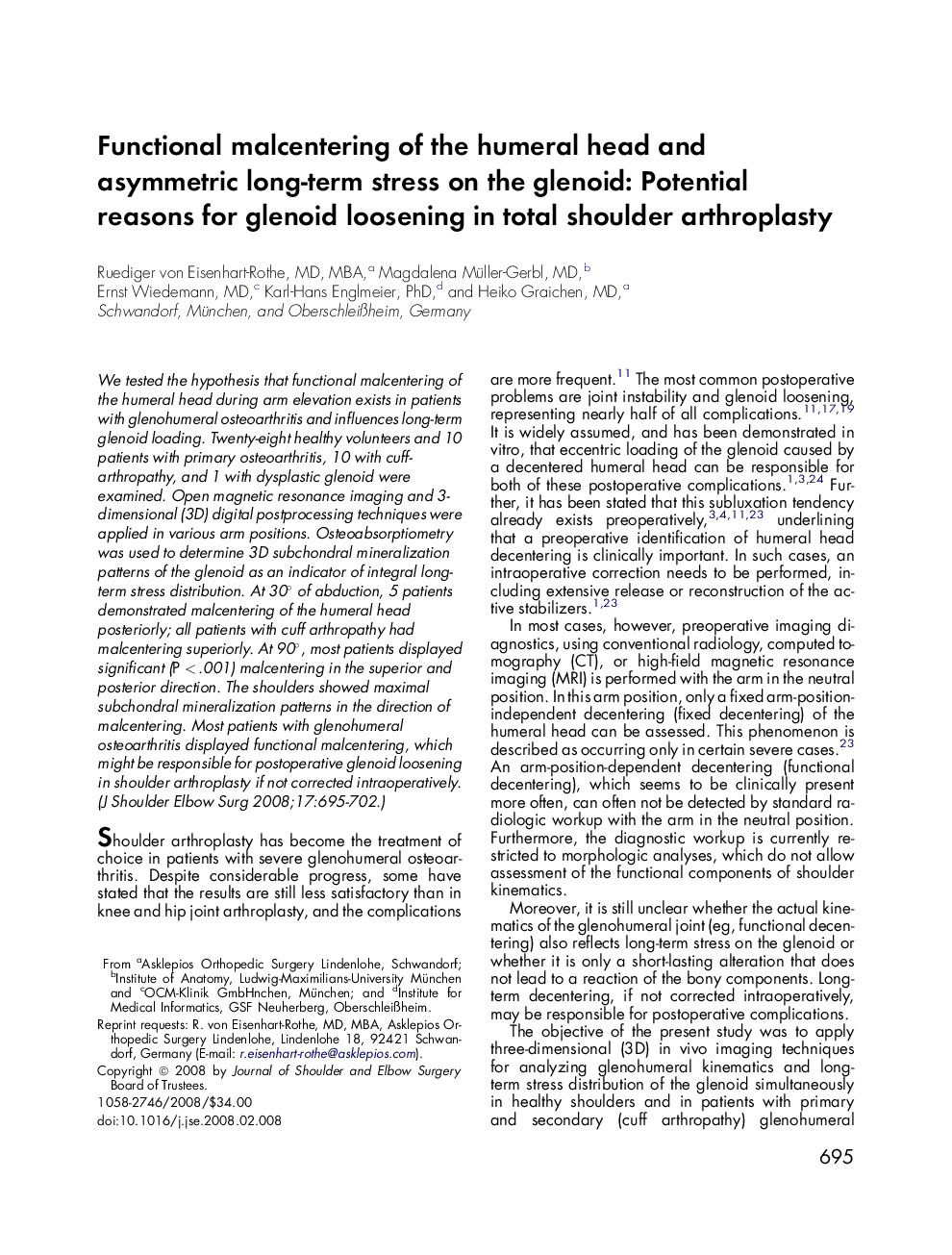| Article ID | Journal | Published Year | Pages | File Type |
|---|---|---|---|---|
| 4075701 | Journal of Shoulder and Elbow Surgery | 2008 | 8 Pages |
Abstract
We tested the hypothesis that functional malcentering of the humeral head during arm elevation exists in patients with glenohumeral osteoarthritis and influences long-term glenoid loading. Twenty-eight healthy volunteers and 10 patients with primary osteoarthritis, 10 with cuff-arthropathy, and 1 with dysplastic glenoid were examined. Open magnetic resonance imaging and 3-dimensional (3D) digital postprocessing techniques were applied in various arm positions. Osteoabsorptiometry was used to determine 3D subchondral mineralization patterns of the glenoid as an indicator of integral long-term stress distribution. At 30° of abduction, 5 patients demonstrated malcentering of the humeral head posteriorly; all patients with cuff arthropathy had malcentering superiorly. At 90°, most patients displayed significant (P < .001) malcentering in the superior and posterior direction. The shoulders showed maximal subchondral mineralization patterns in the direction of malcentering. Most patients with glenohumeral osteoarthritis displayed functional malcentering, which might be responsible for postoperative glenoid loosening in shoulder arthroplasty if not corrected intraoperatively.
Related Topics
Health Sciences
Medicine and Dentistry
Orthopedics, Sports Medicine and Rehabilitation
Authors
Ruediger MD, MBA, Magdalena MD, Ernst MD, Karl-Hans PhD, Heiko MD,
